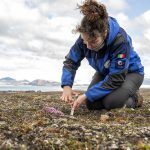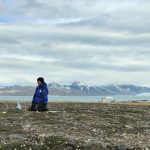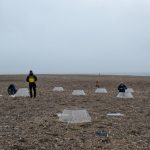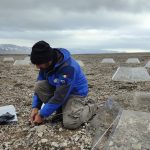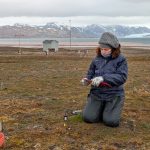The 2025 Arctic expedition of the CNR-IRET researchers has successfully concluded. The team, from the Montelibretti and Porano branches, spent two weeks in the Svalbard Islands, Norway. The aim of the mission was to carry out long-term sampling campaigns and environmental measurements. The team—composed of Emanuele Pallozzi, Olga Gavrichkova, Federica D’Alò, and Carlotta Volterrani—was hosted at the Dirigibile Italia Arctic Station, coordinated by the CNR Institute of Polar Sciences, in the village of Ny-Ålesund, Norway.
The recent expedition focused on the REMUS and BeyondSoil projects, but the Institute’s presence in the Arctic goes back a long way. It was in 2013 that Angela Augusti first set foot there, marking the beginning of a series of research activities. Today, summer sampling campaigns are a key focus of the research group led by Pallozzi and Gavrichkova.
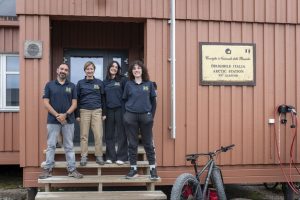
The 2025 summer activities in the Arctic will conclude at the end of August, when Emanuele Pallozzi and Carlotta Volterrani return to Svalbard. The researchers will carry out end-of-season maintenance at the Remus site. For now, their return to Italy is only a “see you soon.”
More info:
The REMUS project (Responses of Microbes in Upper Soil Horizons to Environmental Manipulations), from which the site also takes its name, is a climate manipulation infrastructure established in 2014 about 11 km from Ny-Ålesund. Thanks to passive warming chambers called Open Top Chambers (OTCs), it is possible to simulate higher soil temperatures and increased precipitation. In September 2024, the management of the OTCs was entrusted to Emanuele Pallozzi, who became the new scientific coordinator following Kevin Newsham of the British Antarctic Survey (Cambridge, UK). With this transition, the Institute has officially joined the ITEX network (International Tundra Experiment), an international research initiative studying the effects of climate change on Arctic and alpine tundra ecosystems. Active since 1990, ITEX coordinates long-term experiments in numerous cold-region sites around the world, simulating temperature increases. The goal is to monitor vegetation and ecological responses to global warming, ensuring data comparability among sites and fostering international collaboration.
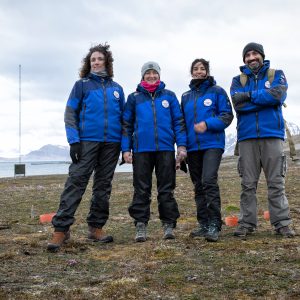
Carlotta Volterrani performing a sampling activity
BeyondSoil (BS) is part of Carlotta Volterrani’s broader PhD research project. She is a research fellow at IRET and a PhD student in Polar Sciences at Ca’ Foscari University of Venice. The project focuses on assessing the effect of large herbivores on carbon and nitrogen cycles in high Arctic tundra ecosystems, with a new emphasis on microbial activity in the soil. BS was made possible thanks to the Arctic Field Grant 2025, funded by the Research Council of Norway through the Svalbard Science Forum (SSF), which supports field research activities in the Svalbard Archipelago. In particular, BS benefits from the collaboration of the Norwegian Polar Institute (NPI), with support from Dr. Virve Ravolainen, head of the vegetation section of the COAT project (Climate-ecological Observatory for Arctic Tundra).


